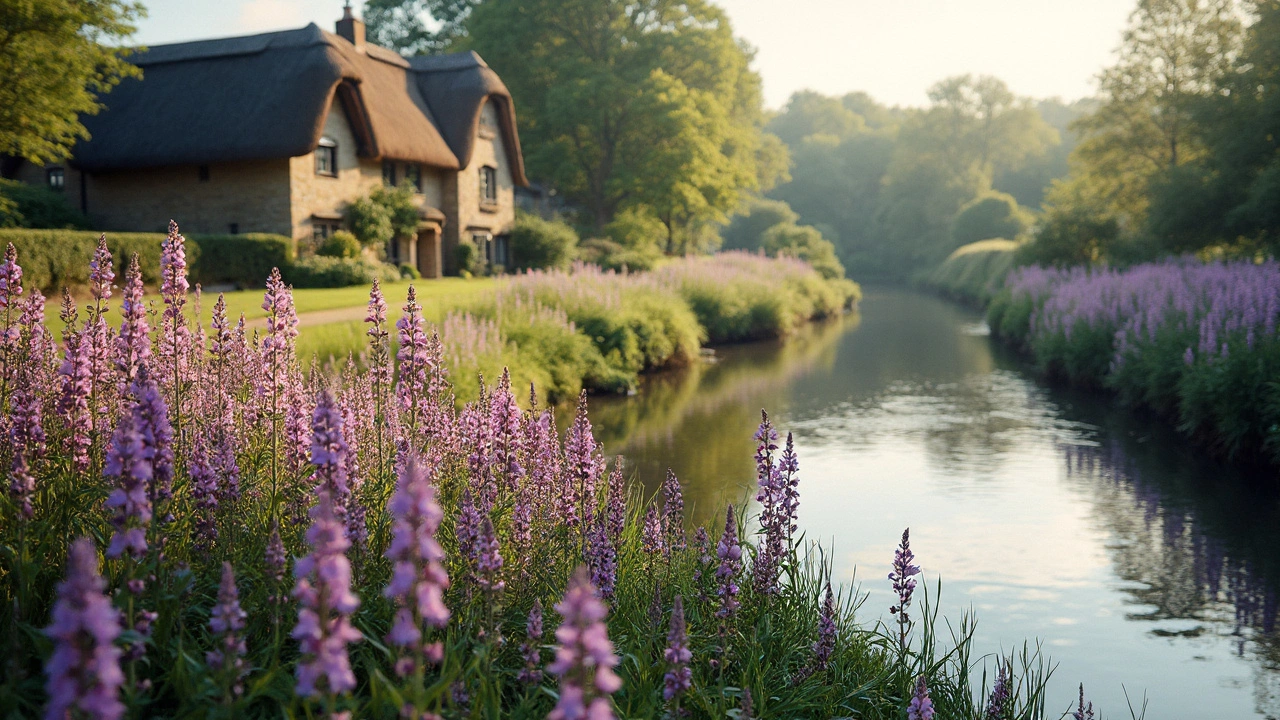Purple Loosestrife (Lythrum salicaria): What to Know
This bright purple plant looks harmless in a garden, but it can take over wetlands fast. If you spot tall spikes of magenta flowers near water, you might be looking at purple loosestrife. It spreads by seeds and roots, crowds out native plants, and changes habitat for birds and fish.
How to ID Purple Loosestrife
Look for a few clear signs: square stems, 4–8 feet tall in good conditions, and clusters of 5–7-petaled purple flowers along a spike. Leaves are opposite or in whorls and are lance-shaped without teeth. Seeds are tiny and produced in huge numbers—one plant can make hundreds of thousands of seeds a year. That’s why it spreads so well along rivers, ponds, and marshes.
It blooms from mid-summer into early fall. Young plants may look like plain green spikes, so check again when flowers appear. Compare carefully with native purple-flowering plants to avoid mistakes.
Why It’s a Problem and What It Does to Wetlands
Purple loosestrife forms dense stands that block sunlight and crowd native species. When that happens, the variety of plants and insects falls, and birds and waterfowl lose nesting spots. Dense roots can alter water flow and make wetland restoration harder. In short: a pretty plant can cause big ecological damage.
It’s listed as invasive in many regions. Check local rules before you move, plant, or sell it—many places ban it or require control.
Controlling purple loosestrife takes persistence. Hand-pulling works for small patches if you remove as much root as possible and repeat for a few seasons. Cut flower spikes before seeds form and dispose of them in trash—don’t compost. For bigger infestations, targeted herbicide use by licensed applicators can help. Some areas use biological control agents, like leaf-eating beetles that specifically target loosestrife. These beetles can reduce spread but are managed by professionals and local agencies.
If you’re unsure, contact local natural resource or extension services. They can confirm ID, advise on local laws, and suggest the safest control methods for your area.
People sometimes ask about using purple loosestrife as an herb. Historically, it was used as an astringent for minor wounds and diarrhea in folk medicine. Modern medicine doesn’t rely on it, and scientific evidence is sparse. Don’t self-treat serious conditions with foraged plants—talk to a healthcare provider first.
If you want to help, remove flower stalks before they seed, report large infestations to local authorities, and choose native plants for shoreline gardening. Small, steady actions from many people make a big difference for wetland health.
Supercharge Your Health with Purple Loosestrife Supplement
Purple loosestrife, once seen as just an invasive plant, is gaining attention as a dietary supplement. Known for its potential health benefits, it's being used for digestive health and skin conditions. This article delves into how this plant can be a natural remedy and what you need to know before incorporating it into your lifestyle. A few simple tips on how to enjoy its benefits safely are also covered.
View More
